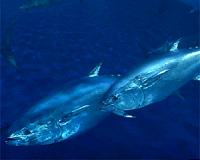 |
Los Banos, Philippines (SPX) Mar 04, 2010 In the last fifty years, the Philippines has more than tripled its rice yield, while the world average rice yield has increased only about 2.3 times. Despite being criticized as a poor rice producer because of its status as the world's biggest rice importer, the Philippines has actually done remarkably well in raising its rice yields from 1.16 tons per hectare in 1960* to 3.59 tons per hectare in 2009**. In 2009, Philippine rice yields were actually lower than the previous two years due to the damage done by the tropical storms "Ondoy" and "Pepeng". In 2007, average rice yields topped 3.8 tons per hectare and in 2008 they were 3.77 tons per hectare**. Rice yields in the Philippines are also higher than those in Thailand, the world's biggest exporter of rice, where yields over the last few years have been around 3 tons per hectare*. "The Philippines has enthusiastically taken up rice science technologies that have helped farmers dramatically increase their yields," said Dr. William Padolina, deputy director general for operations at the International Rice Research Institute (IRRI). "Filipino farmers have adopted more than 75 IRRI-bred high-yielding rice varieties since 1960, have greatly improved their fertilizer and pest management strategies, and are implementing water-saving technologies," he added. IRRI was established in the Philippines in 1960 following a hunt throughout Asia that identified Los Banos in Laguna as the most advantageous location for an agricultural research program to expand food production in Asia. Los Banos was seen as an emerging hub of agricultural science and economics and the government of the Republic of the Philippines was supportive of research, teaching, and extension programs to improve farm management. "This year, IRRI is celebrating its 50th anniversary," said Dr Padolina. "During our 50 years we have established some important and productive partnerships with institutions such as the Philippine Rice Research Institute and the University of the Philippines Los Banos that share our goal to help alleviate poverty through improved rice production." According to estimates from the United States Department of Agriculture, the average world rice yield in 1960 was 1.84 tons per hectare and in 2009 it was forecast at 4.24 tons per hectare. Dr. Padolina acknowledges that the Philippines could improve its rice yields even more and said that he was confident that "the Philippines will continue to support rice research as a way of ensuring food security for Filipinos, to help lift local rice farmers and consumers out of poverty, and in turn improve the entire economy of the country. "IRRI is also dedicated to delivering rice science innovations specifically suited to Philippine conditions that are of practical use and value to Filipino farmers," he added. In May 2008, the Philippine Department of Agriculture and IRRI signed a Memorandum of Agreement on Accelerating Rice Production in the Philippines. Last year, IRRI released eight new rice varieties in the Philippines as well as Nutrient Manager for Rice, a Web-based tool that helps farmers make wise fertilizer decisions. Also, in the International Rice Genebank housed at IRRI, 4,670 rice samples from the Philippines are conserved, including 4,070 traditional varieties, 485 modern varieties, and 115 wild relatives - all are available to share with Filipino farmers and scientists.
Share This Article With Planet Earth
Related Links International Rice Research Institute Farming Today - Suppliers and Technology
 US seeks Atlantic bluefin tuna ban in challenge to Japan
US seeks Atlantic bluefin tuna ban in challenge to JapanWashington (AFP) March 3, 2010 The United States called Wednesday for a ban on the international trade in Atlantic bluefin tuna to save the species from extinction, challenging Japan ahead of a major global meeting. With demand for sushi and sashimi driving the world's tuna stocks to dangerously low levels, the United States said it would ask a meeting in Qatar to declare the commercial trade in tuna a threat to the survi ... read more |
|
| The content herein, unless otherwise known to be public domain, are Copyright 1995-2010 - SpaceDaily. AFP and UPI Wire Stories are copyright Agence France-Presse and United Press International. ESA Portal Reports are copyright European Space Agency. All NASA sourced material is public domain. Additional copyrights may apply in whole or part to other bona fide parties. Advertising does not imply endorsement,agreement or approval of any opinions, statements or information provided by SpaceDaily on any Web page published or hosted by SpaceDaily. Privacy Statement |